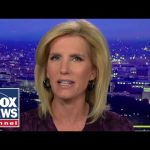In the early weeks of President Donald Trump’s second term, his administration has ignited a fierce debate over the boundaries of executive power, with critics alleging that his actions have plunged the nation into a constitutional crisis. Central to this controversy is Trump’s sweeping executive orders, including a temporary freeze on federal funding and efforts to reclassify thousands of civil service positions, which have provoked legal challenges and intense scrutiny from both political opponents and legal experts.
The funding freeze, enacted via an executive order, has been particularly contentious. Trump justified the move as a necessary review to ensure federal spending aligns with his policy priorities. However, critics argue that this action violates the Constitution’s separation of powers, which grants Congress—not the president—the authority to allocate federal funds. Federal courts have already intervened, temporarily blocking the freeze and ruling that it likely exceeds the president’s legal authority. Despite these setbacks, Trump’s administration has doubled down, framing the judiciary as an obstacle to executive efficiency and accusing judges of engaging in “judicial activism.”
Adding fuel to the fire is Trump’s revival of the “unitary executive theory,” which posits that the president holds near-total control over the executive branch. This theory underpins his controversial decision to reclassify civil service employees under a new “Schedule F,” stripping them of job protections and enabling their dismissal at will. While Trump argues this move will streamline government operations and eliminate bureaucratic resistance, opponents see it as a dangerous overreach that undermines federal workers’ independence and invites political purges.
Trump’s actions reflect a bold effort to reclaim executive authority from an entrenched bureaucracy often resistant to conservative reforms. His funding freeze and administrative shake-ups are seen by supporters as necessary steps to dismantle wasteful spending and ensure that federal agencies serve the public interest rather than partisan agendas. Conservatives have long argued that unelected bureaucrats wield too much power, and Trump’s initiatives aim to restore accountability by placing decision-making firmly in the hands of elected leadership.
However, these moves also raise legitimate concerns about preserving constitutional checks and balances. While conservatives may applaud efforts to rein in an overgrown administrative state, they must also recognize the importance of maintaining a functional separation of powers. If executive overreach becomes normalized, it could set a precedent for future administrations—liberal or conservative—to bypass Congress and consolidate power in ways that undermine democratic governance.
Ultimately, Trump’s actions have sparked a broader conversation about the role of executive power in American democracy. While his supporters view him as a disruptor challenging an unaccountable system, his critics warn that his approach risks eroding foundational principles of governance. As these legal battles unfold, they will test not only Trump’s vision for government but also the resilience of America’s constitutional framework.




